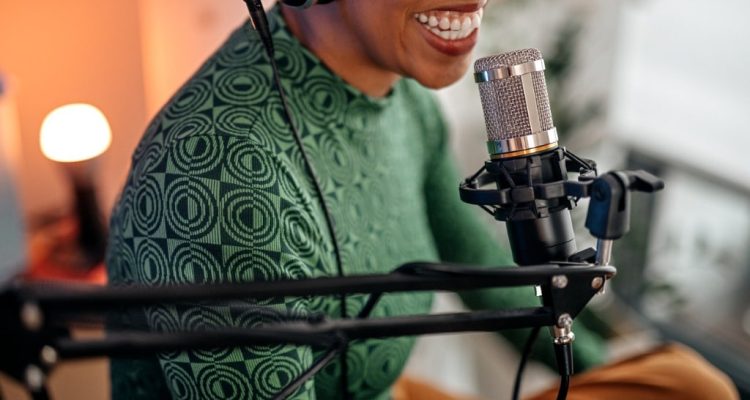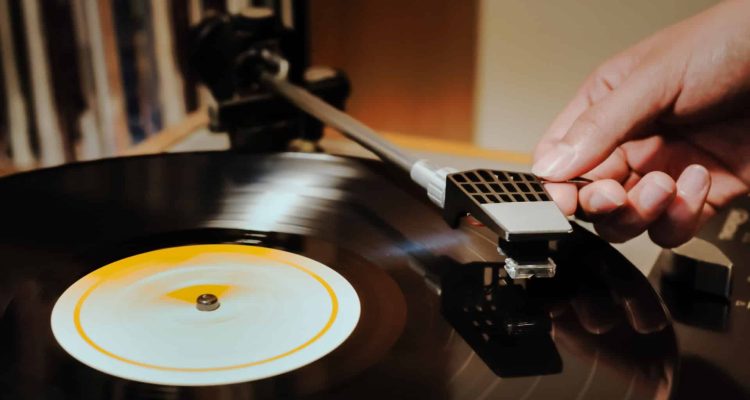

Are you a musician ready to start recording, a podcaster looking for great audio quality in your interviews and episodes, or maybe even a YouTuber who wants to take their vlogs up a notch? If so, then having the right microphone is essential.
However, with so many makes and models of mics out there on the market, it can be tricky selecting the one that suits your specific needs. That’s why we’ve put together this comprehensive guide to help you choose the perfect microphone for whatever project you’re working on.
Factors to Consider When Choosing a Microphone
The type of sound you want to capture is a massively important factor in determining the type of microphone you should buy. There are various types of microphones, and each one is better suited for capturing a different type of sound.
Condenser microphones are ideal for capturing detailed sounds like vocals. Dynamic microphones are the best option for loud sounds like electric guitars and drums. Ribbon microphones are great for capturing acoustic instruments. USB microphones are the most convenient option and perfect for home recording and podcasting.
Directionality
You will need to consider the directionality of your microphone. Microphone directionality refers to the sensitivity pattern or pickup pattern of a microphone, which determines how it captures sound from different directions. There are several common types of microphone directionality, including the following.
Omnidirectional: An omnidirectional microphone picks up sound equally from all directions. It has a 360-degree pickup pattern, which means it captures sound from all around the microphone. This type of microphone is ideal for situations where you want to capture sound from all directions, such as recording ambient sound or capturing audio in a conference room.
Cardioid: A cardioid microphone has a heart-shaped pickup pattern, with the most sensitivity at the front and lesser sensitivity at the sides and rear. It captures sound well from the front and rejects sound from the sides and rear. Cardioid microphones are commonly used in recording studios, on stages, and in other situations where you want to capture sound from the front while minimizing background noise from other directions.
Supercardioid/Hypercardioid: These microphones have a narrower pickup pattern than cardioid microphones, with even more sensitivity at the front and even less sensitivity at the sides and rear. They are ideal for situations where you need a more focused pickup pattern, such as capturing audio from a specific source in a noisy environment.
Shotgun: Shotgun microphones have an even narrower pickup pattern than supercardioid and hypercardioid microphones, typically in the shape of a tube or a line. They are highly directional and are commonly used in film production, broadcasting, and outdoor recording situations, where the sound source is far away from the microphone or in a noisy environment.
Bidirectional: A bidirectional microphone, also known as figure-8 or bi-directional, captures sound from the front and rear while rejecting sound from the sides. This type of microphone is useful for capturing sound from two opposite directions, such as recording an interview with two people facing each other.
Multi-Pattern: Some microphones have switchable or adjustable pickup patterns, allowing them to switch between different directionality modes, such as omnidirectional, cardioid, and bidirectional. These microphones offer more flexibility and versatility in capturing sound in different recording situations.
Frequency Response
A microphone’s frequency response indicates the range of frequencies it can capture. You’ll want to choose a microphone with a frequency response that matches the sound you want to capture. For example, a microphone with a boosted high-frequency response might be ideal for recording vocals or acoustic guitar, while a microphone with a boosted low-frequency response might be better suited for recording bass or kick drums.
Ultimately, the best microphone frequency response is one that matches your intended use and personal preferences. It’s important to do your research and try out different microphones before making a decision.
Sensitivity
Microphone sensitivity is a measure of how effectively a microphone converts sound pressure into an electrical signal. In other words, it measures how responsive a microphone is to sound. A microphone with high sensitivity will produce a stronger electrical signal in response to a given sound pressure level, whereas a microphone with low sensitivity will produce a weaker signal in response to the same sound pressure level.
The sensitivity of a microphone is an important consideration when choosing a microphone for a particular application. For example, a microphone with high sensitivity might be more suitable for capturing quiet sounds, while a microphone with lower sensitivity might be better for loud sounds without distortion.
Additional Tips to Consider When Shopping for Microphones
Maybe you’ve determined the exact type of microphone that you need, but there are still other factors to consider. How much are you willing to spend? Which brand will you choose? The following tips will help you make an informed decision.
Determine Your Budget
Buying a microphone can be an investment, but it doesn’t have to break the bank. Before you start shopping for the perfect mic, decide on your budget, and stick to it. Doing this will prevent buyer’s remorse and spare you from overspending.
Establishing a budget will also help you narrow down your options, as some mics can skyrocket in price because of additional features, like pick-up pattern, portability, and frequency response. Finding a mic with the features you’re looking for that fits within your budget is key.
For example, if you are recording vocals at home, you don’t need an incredibly expensive microphone because there are much cheaper condensers out there that could get the job done. Research and plan out what kind of microphone best suits your needs before committing to any purchase.
Research Different Models and Brands
Finding the perfect microphone can be tricky, but don’t let that get in the way of finding the best device for your specific needs. Researching different models and brands is the best way to compare features and hone in on a microphone that provides exactly what you need.
Spend time looking up product reviews and asking around for recommendations from other content creators or audio engineers who have found success with particular products. When in doubt, don’t be afraid to reach out directly to the manufacturer for advice—chances are they’ll be more than happy to help talk you through your options and point you in the right direction.
Read Reviews
If you’re still struggling to decide on which microphone to purchase, it can be extremely helpful to read reviews from people who have already purchased the same model. They give an insight into all of the features the microphone offers, as well as any potential drawbacks that you might encounter.
Skip past the sales descriptions given by stores, and look for genuine user accounts for a more reliable assessment. Furthermore, this is also a great opportunity to communicate with fellow audio professionals and perhaps even contact them with any questions or concerns. Taking time to peruse customer reviews can certainly save you time and money in the long run, making your audio setup all the more successful.
Test out Different Microphones at Local Stores
Before buying your dream mic, it’s important to take the time to test out a few different options. Although you could make a decision while browsing online, it’s often much more beneficial to hear the differences in sound quality when checking out mics at a local audio shop or store. Different types of microphones will produce various sounds and tones. Testing out each type will give you an accurate portrayal as to which one is best suited for your application.
Furthermore, the staff at these locations tend to be experts in all things audio, so they can provide you with helpful advice if you’re still unsure which microphone would be right for you.
Finding the best microphone for your needs can be a tricky process, which is why it is important to do some research and compare brands, models, and prices before making a choice.
Try to think about the end result you are after and make sure the product you choose can provide that. The right microphone can take your sound recording abilities to a whole new level, but it all starts with learning what options are out there.
Galaxy Audio has been in the audio equipment business since 1977. We are recognized worldwide as a leader in precision audio technology, and our products have graced the stages of some of the music business’s biggest stars.
Our reputation for creating superior audio equipment and dedication to innovation has withstood the test of time. Whether you need speakers, microphones, monitors, or other high-quality sound equipment, Galaxy Audio can help!






